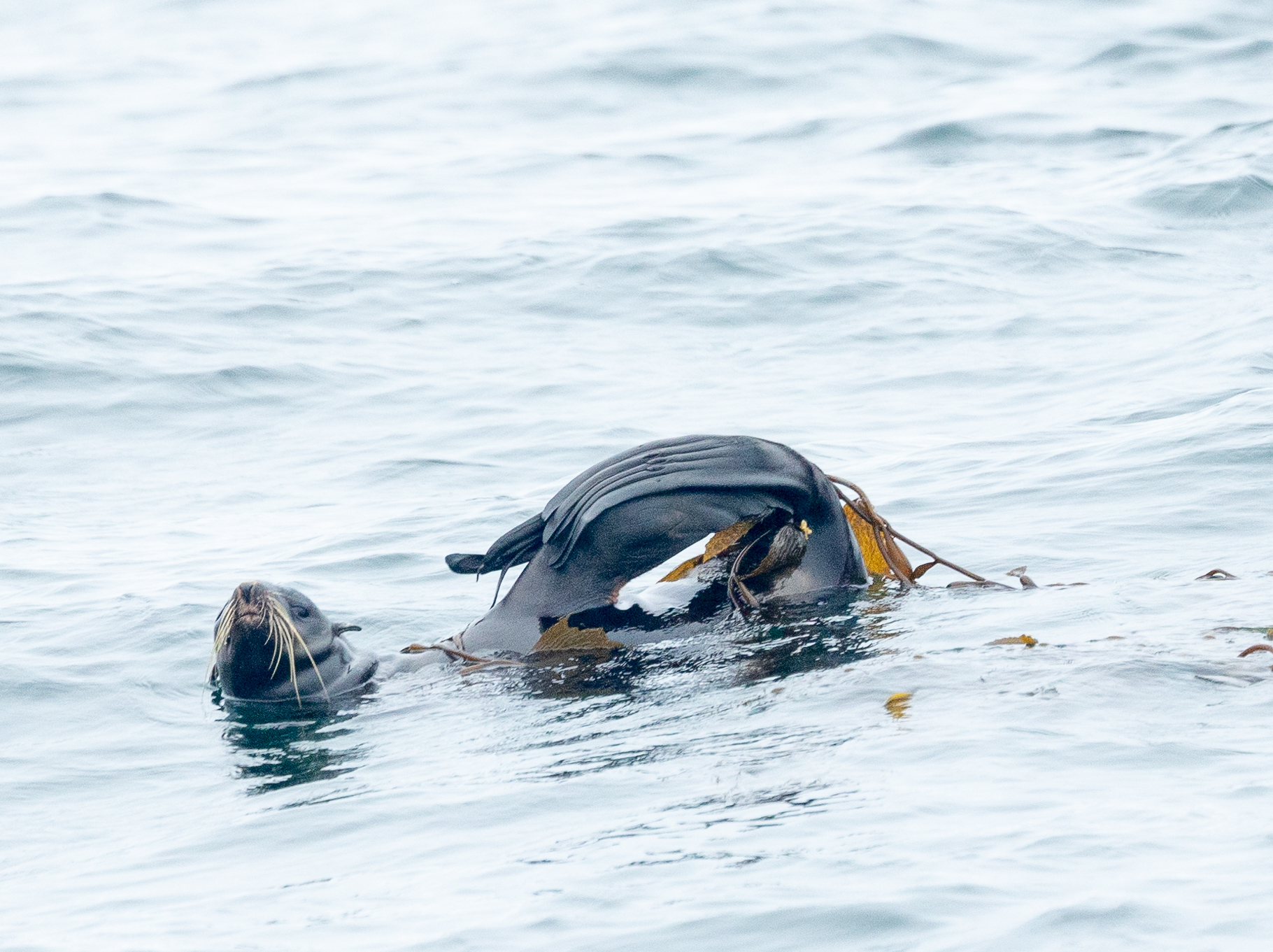
A Long Weekend in the Bay Area, California – September 2023
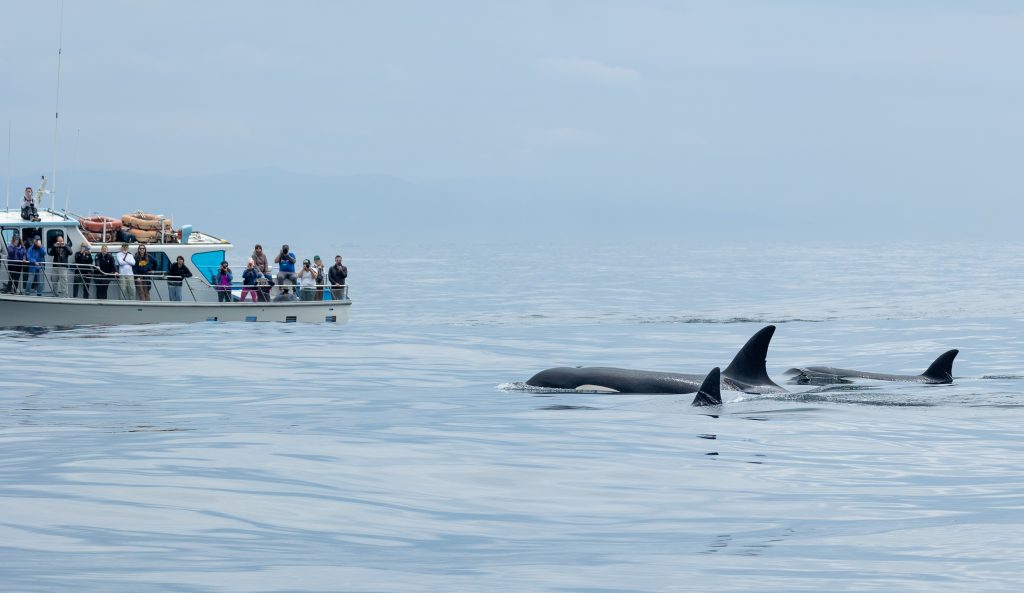
Killer Whales (Orcinus orca), in Monterey Bay.
Charles Hood and others spent August tormenting me – and possibly other seal lovers – with their posts of multiple Guadalupe Fur Seals in Monterey Bay. This is not an easy species to see in the USA without spending a considerable le amount of money, nor in Mexico I discovered after having to give up on my plans to visit a colony there last year. But El Nino has brought unusually warm water into Monterey Bay and the seals have headed north.
So I took a lightning trip over from New York to the West Coast over the weekend to look for the seals and San Joaquin Pocket Mice, another Californian species I have missed several times but which Venkat Sankar predicted ought to be quite common now after the rains earlier this year.
I arrived in San Francisco on Friday night and drove the two hours down to Monterey arriving about midnight. Nancy Black, from Monterey Whale Watch, told me the seals were hanging out 20 miles or so offshore, which meant my best chances to see one would be on one of her 12 hour birding trips. There was none that weekend, but Nancy was running an 8 hour trip on Saturday so I kept my fingers crossed.
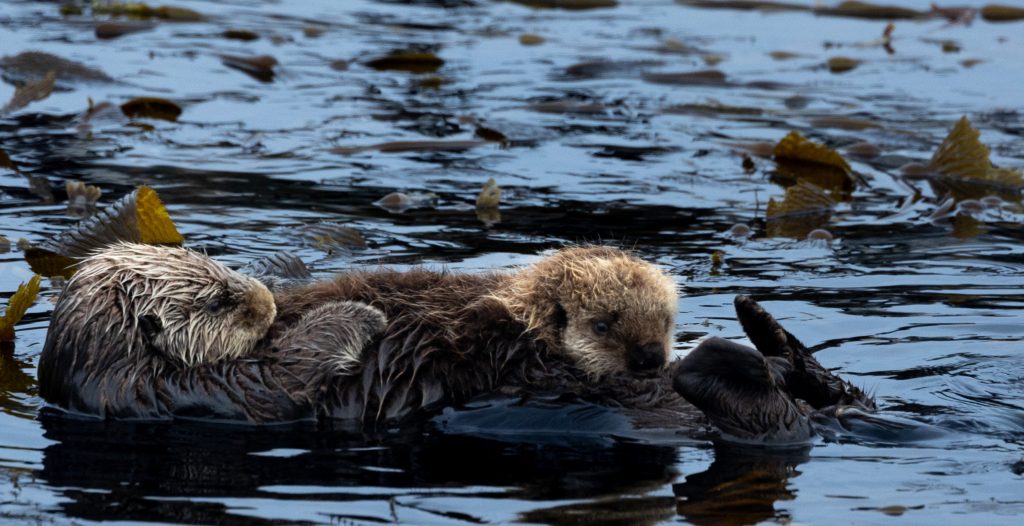
Sea Otter (Enhydra lutris)
It was a great day at sea, as days so often are in Monterey Bay. After watching the customary Sea Otters and California Sea Lions next to the wharf we headed out to sea. The first cetaceans were a pod of Long-beaked Common Dolphins that came into the bow. Common Dolphin taxonomy is confusing. Until a few years ago it seemed widely accepted that there were two specien: Short-beaked and Long-beaked. They look slightly different and don’t usually associate with each other at least in US waters. But the two species were lumped, by many sources at least, into “Common Dolphin”. It seems that opinions are changing again and there are plans to split them. This species has had more break-ups than Katy Perry and Orlando Bloom.
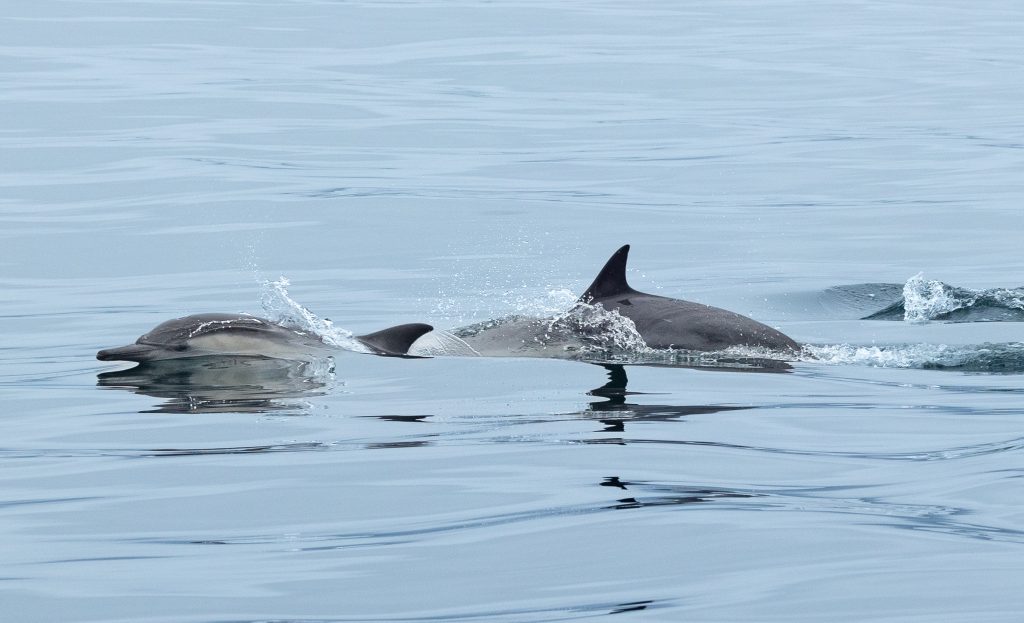
Long-beaked Common Dolphin (Delphinus (delphis) capensis)
Long-beaked are the common species in Monterey. But this summer the warmer waters in the bay have attracted large pods of Short-beaked Dolphins for the first time in a few years. About three hours offshore a very large pod, mixed with Pacific White-sided Dolphins, approached the boat and came into the bow wave.
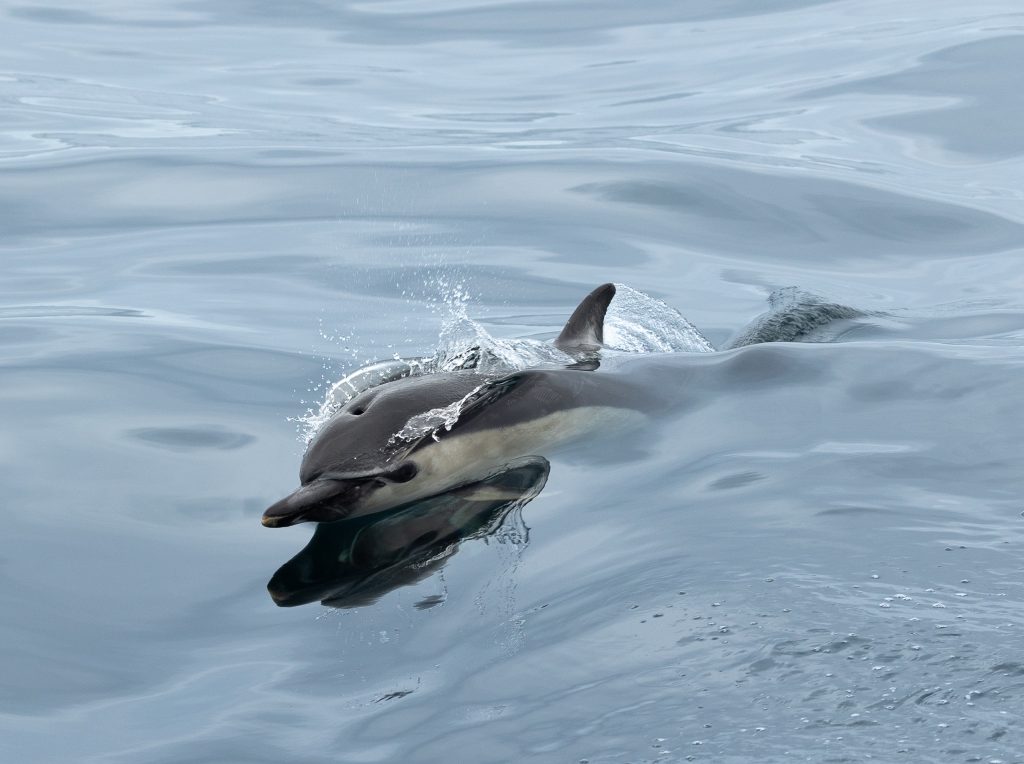
Short-beaked Common Dolphin (Delphinus delphis)
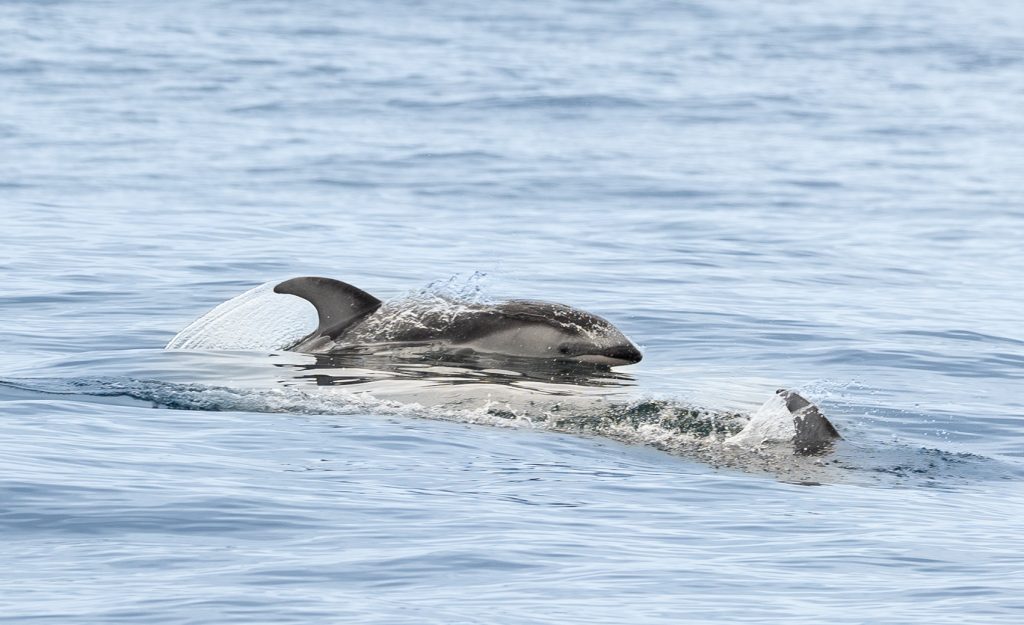
Pacific White-sided Dolphin (Sagmatias obliquidens)
A little further on we spotted a lone Northern Elephant Seal and an impressively large Mako Shark cruising at the surface.
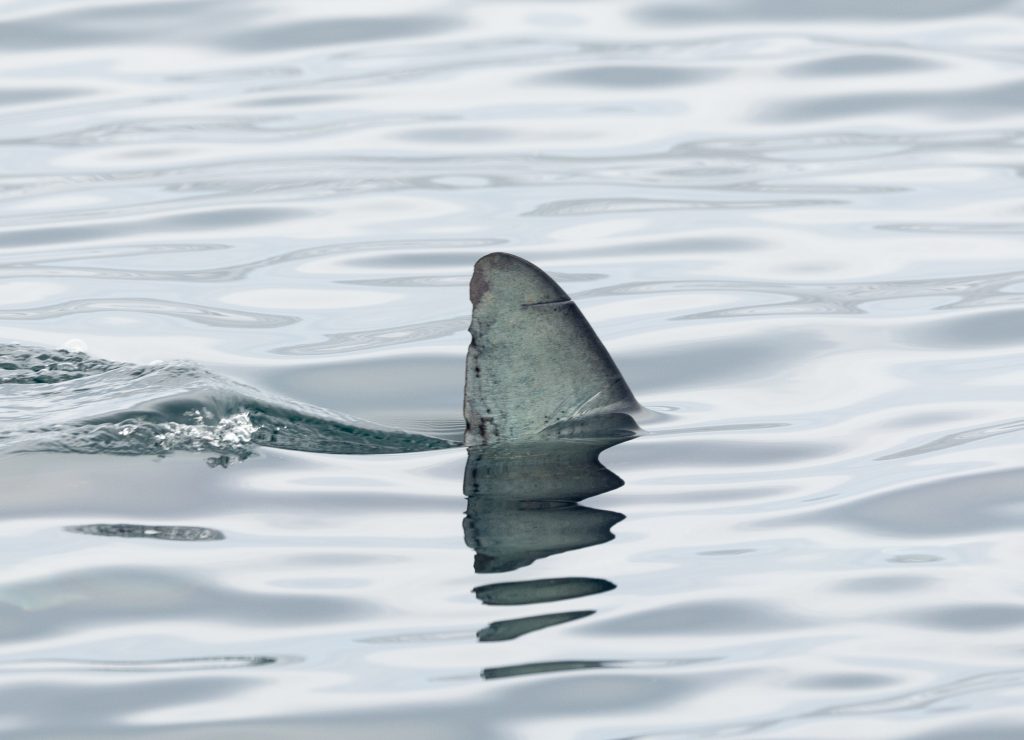
Mako Shark
By midday we were about 15 miles offshore and getting close to the seal zone. Nancy’s radio crackled into life with a report of Killer Whales close to shore. Nothing comes between Nancy and a Killer Whale, so we changed direction and the seal chase was over. Even I though I won’t complain about a pretty great hour or two with the four Orcas especially when they devoured a California Sealion.
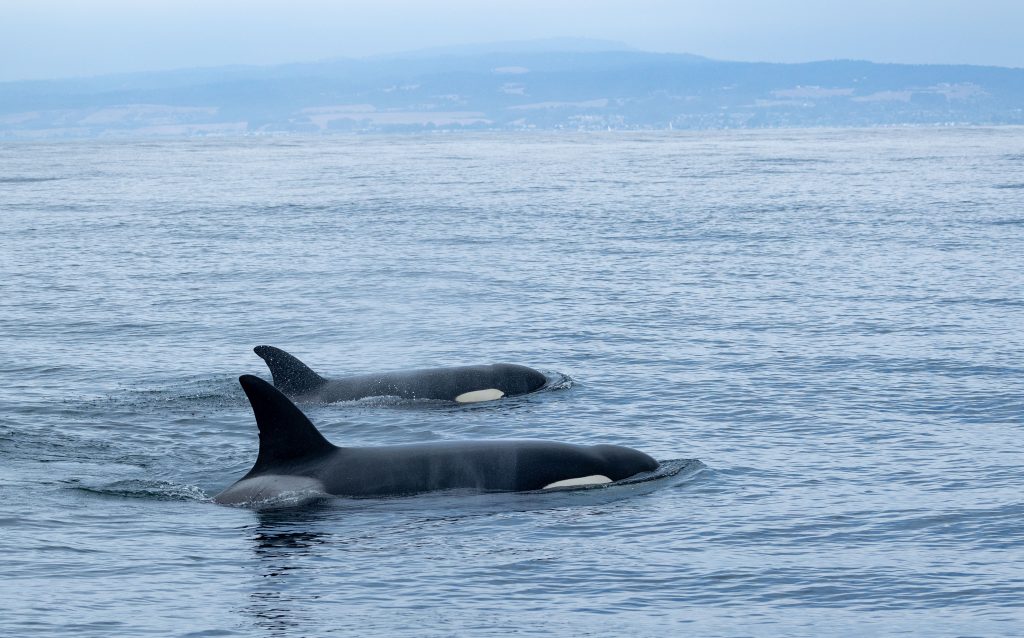
Orca (Orcinus orca)
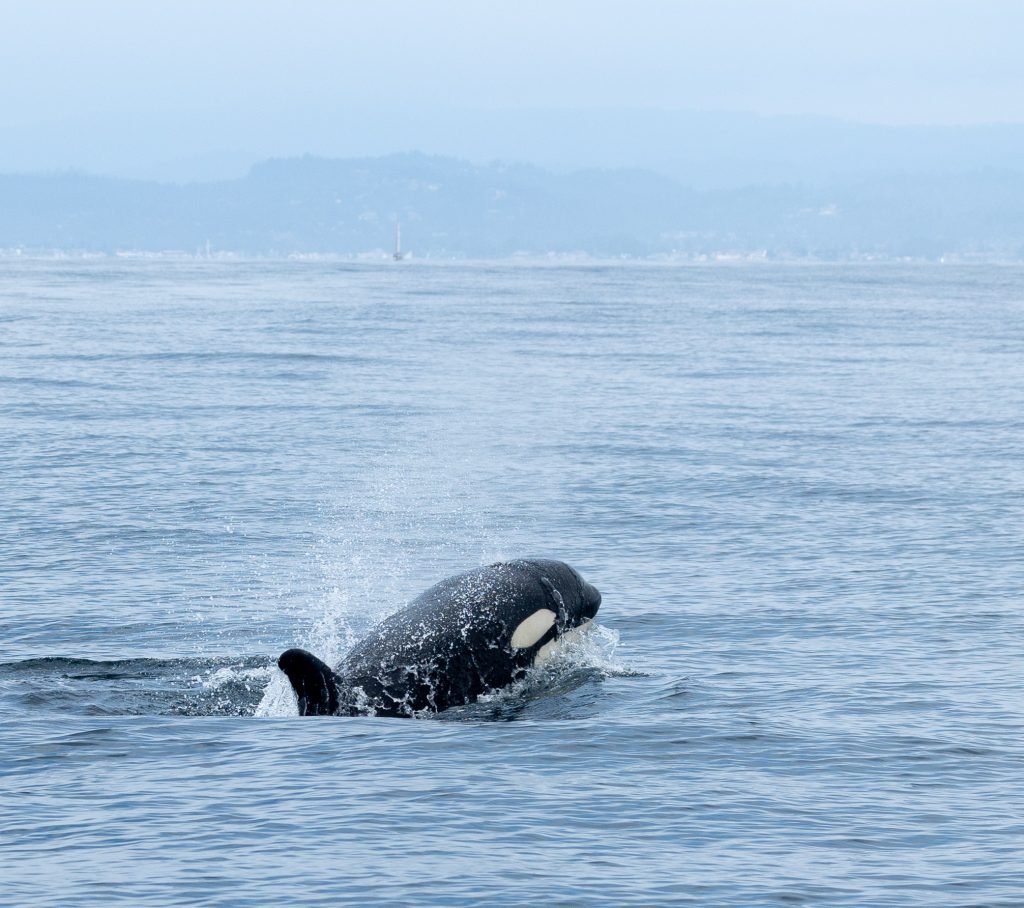
Orca (Orcinus orca)
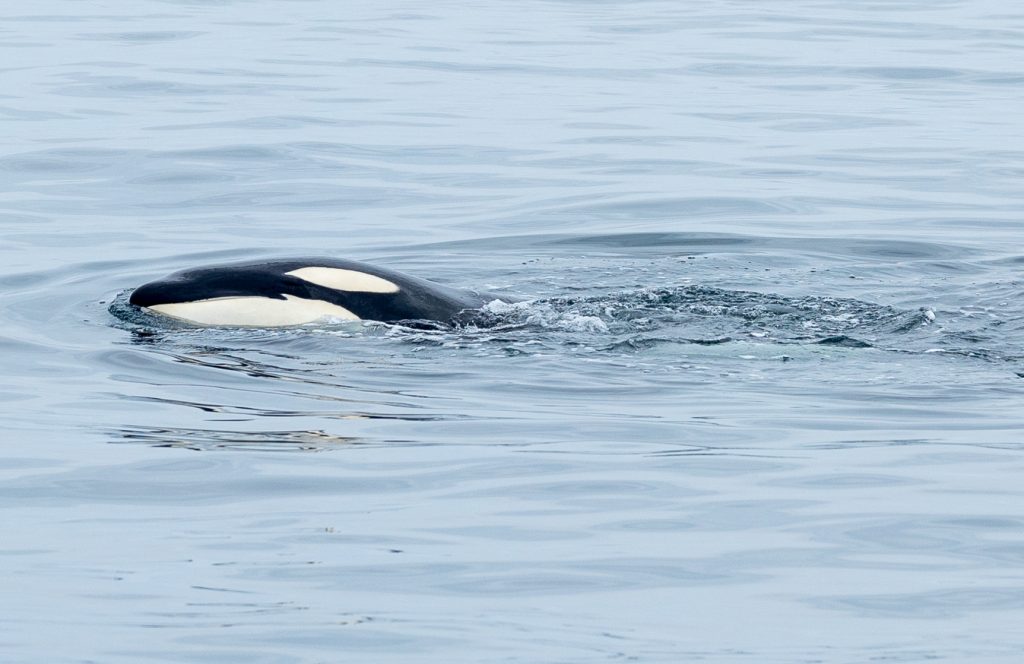
Orca (Orcinus orca)
We were back at the wharf by 4pm, sailing past several Humpback Whales on the way in.
Nancy knew how disappointed I was to have missed the fur seals. Something in my grief-stricken expression possibly gave it away. And she very kindly took pity on me, offering to take me out on my own on Monday specifically in search of fur seals far offshore. I think it took me about 1.5 seconds to say something along the lines of “I would love to if you are sure it is not too much trouble – so what time will we leave and let me just book a later flight home.”
I reached the small town of Los Banos, a couple of hours inland, at dusk where I spent Saturday evening trying – not all that successfully – to stay awake as I drove around the Panoche Hills in search of San Joaquin Pocket Mice. I saw very little other than a Gambel’s Deermouse and a few Giant Kangaroo Rats. My motel would be a strong contender to win a medal in the California’d Seediest Accommodation 2023 awards.
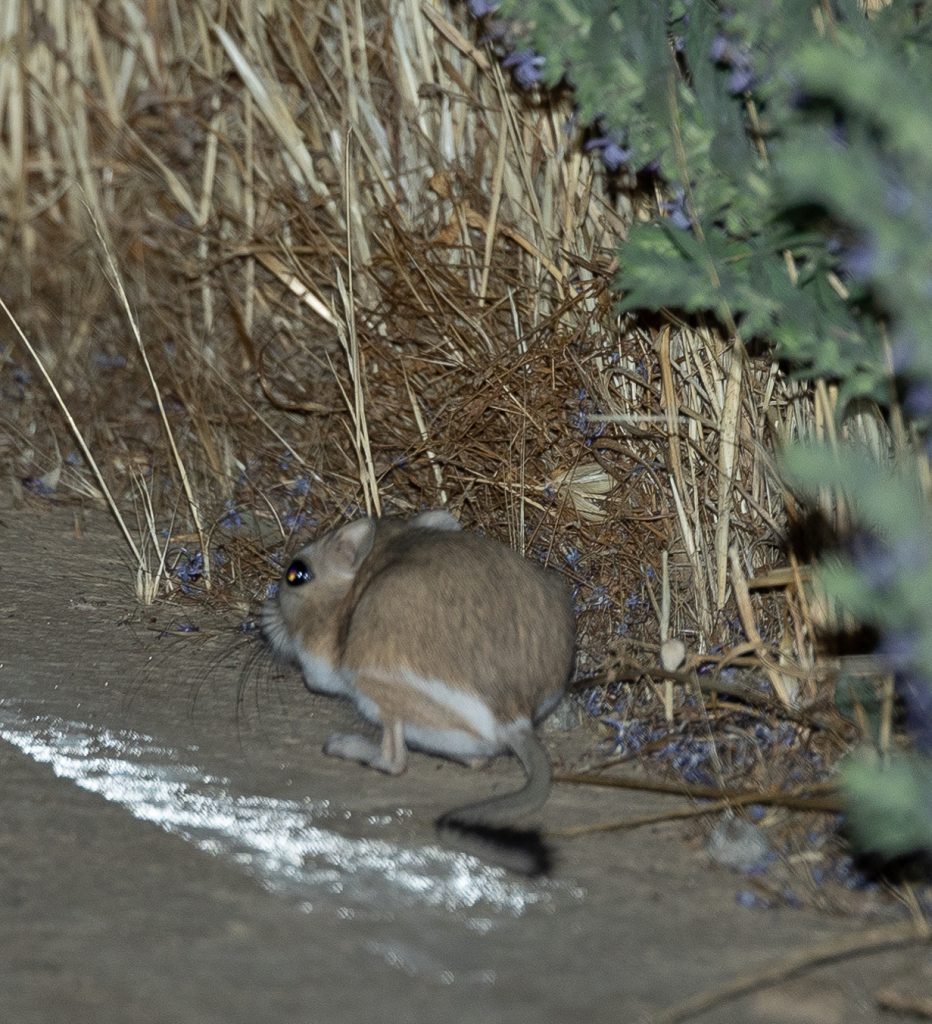
Giant Kangaroo Rat (Dipodomys ingens)
But despite being 0/2 on my target species I was still optimistic: all was not yet lost on the pocket mouse quest. On Sunday, after a luxurious five hours of sleep, I drove a couple of hours north to San Ramon – quite close to San Francisco – to meet up with Venkat Sankar, the rodent spotting legend, to try again for San Joaquin Pocket Mice.
Venkat was feeling optimistic about our chances along Patterson Pass Road near Livermore.His optimism was well-founded. It took about 10 minutes in good habitat to find this pretty little pocket mouse frozen just off the edge of the road close to here.
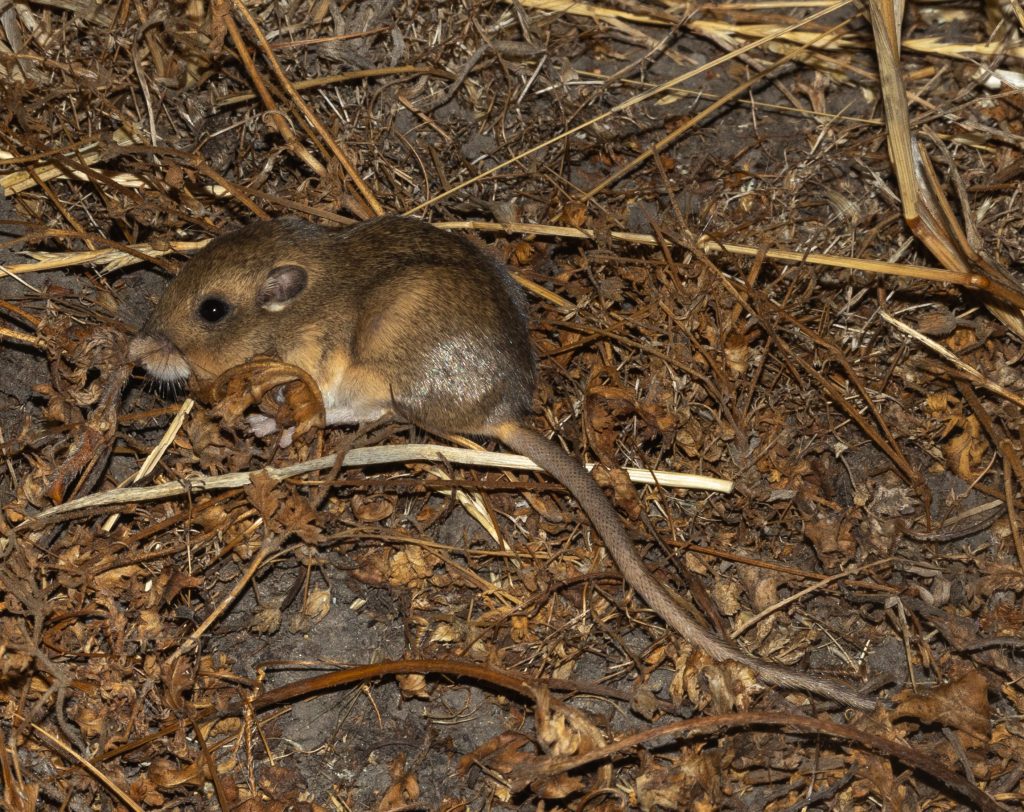
Sann Joaquín (Salinas) Pocket Mouse (Perognathus inornatus)
And over the course of the next hour – cruising slowly east – we saw another dozen crossing the road. We also spotted a few Gambel’s Deermice and one or two other species that remain unidentified. I have driven this road before in search of pocket mice and dipped. So now is a great time to look for them.
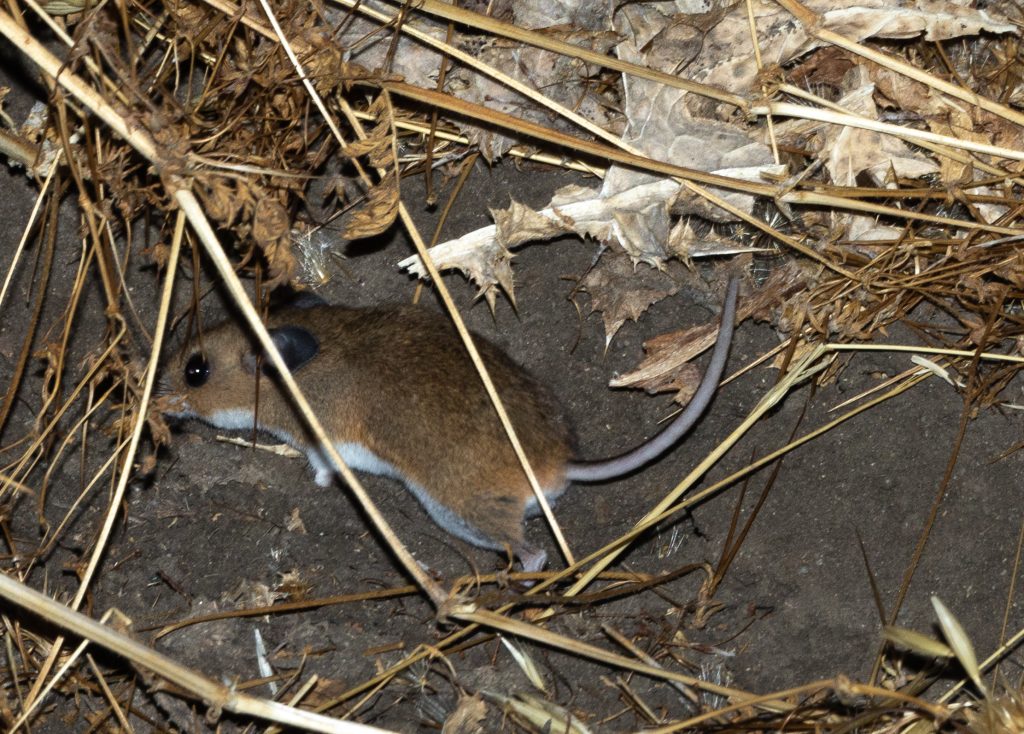
Gambel’s Deermouse (Peromyscus gambelii)
At 4.30 am the following morning I was driving back down to Monterey to meet up with Nancy Black for our 7am seal quest. The weather was not great but we steamed out to sea, slowing only for some more Short-beaked Common Dolphins. By 11 am we were more than 20 miles off shore and Nancy turned towards the south. I was starting to lose hope when I spotted something strange in the swell. Maybe a seal? Or maybe a large piece of kelp? We stopped the boat but I couldn’t find it again.
I was admitting to Nancy that I must have imagined it when Evan – one of the crew and a talented drone operator – yelled “Fur Seal off the stern”. Have there ever been five more beautiful words?
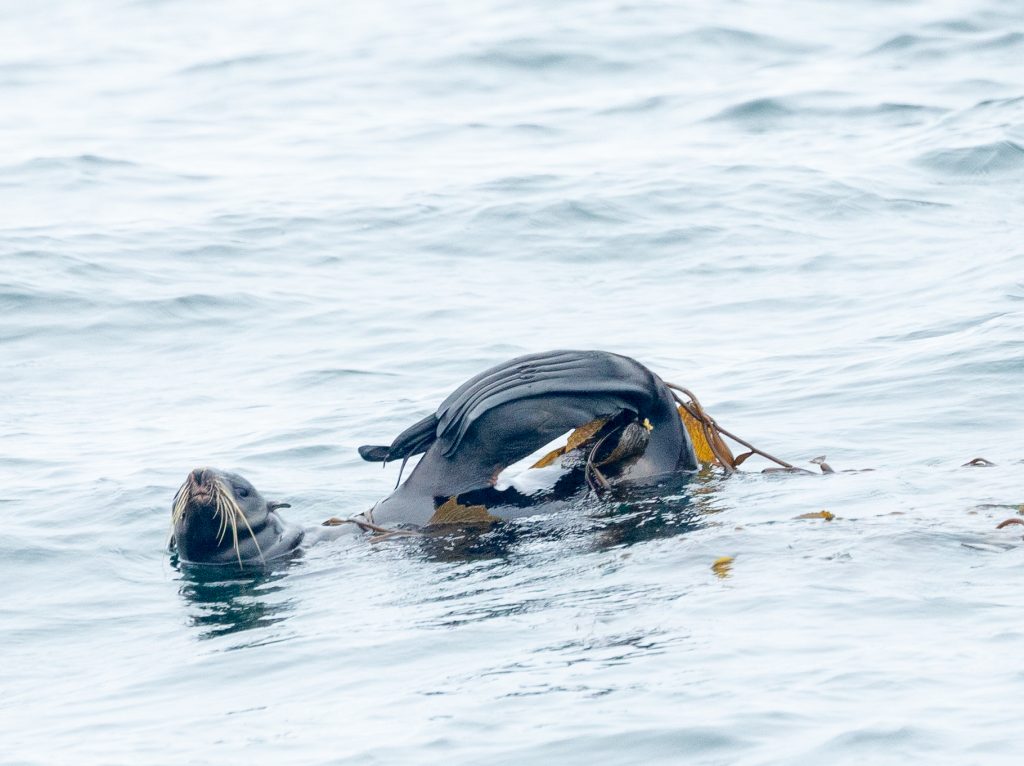
Northern Fur Seal (Callorhinus ursinus)
And there in all its beauty was a fur seal in characteristic “jug handle pose”. Fur seals mainly hunt at night, and rest like this during the day at the surface. The seal had attached itself to a raft of kelp so it was easy to keep track of despite the swell.
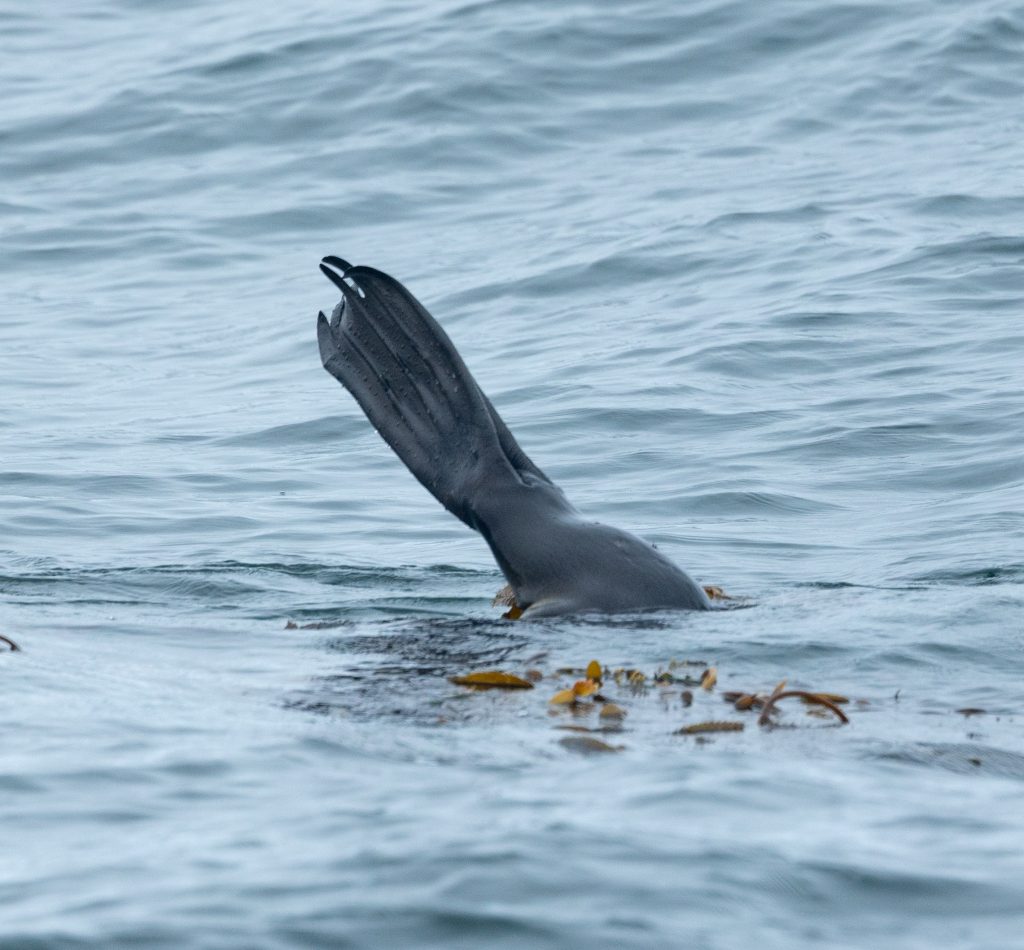
Northern Fur Seal (Callorhinus ursinus)
As we got closer the seal ducked down, sticking it’s tail out of the water: a behavior that is apparently characteristic of Guadalupe – but not Northern – Fur Seals.
But I was still not convinced about the species. Some illustrations portray the two seals as having very different head profiles: Northern Fur Seals are convex in profile, while Guadalupe Fur Seals have a straight snout. This seal seemed somewhere in-between, looking more like one – and then the other – depending on the angle I saw it from.
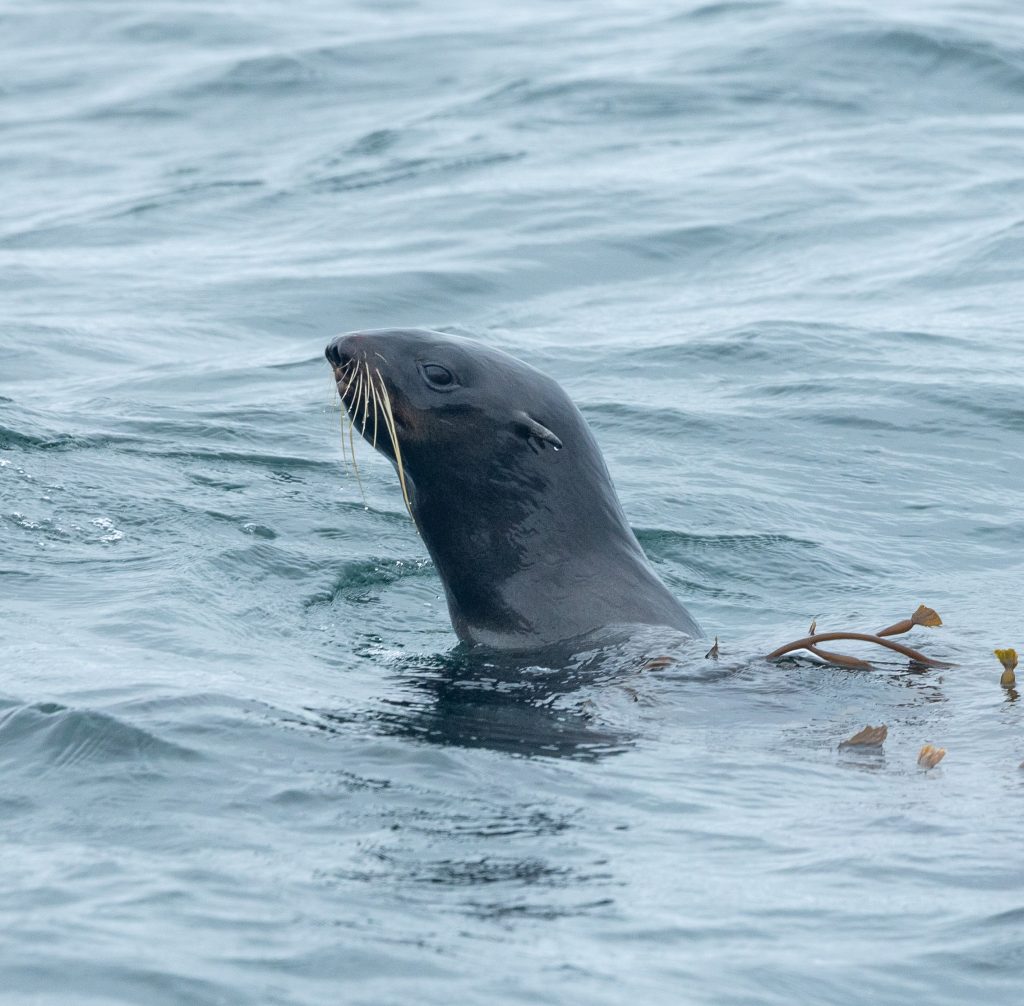
Northern Fur Seal (Callorhinus ursinus)
Field guides also discuss the amount of fur on the front flippers is diagnostic. Northern Fur Seals have naked front flippers from the wrist down. Guadalupe Fur Seals have patches of hair along the flippers. This is a less subjective diagnostic feature but it is hard to see fur on a wet animal.
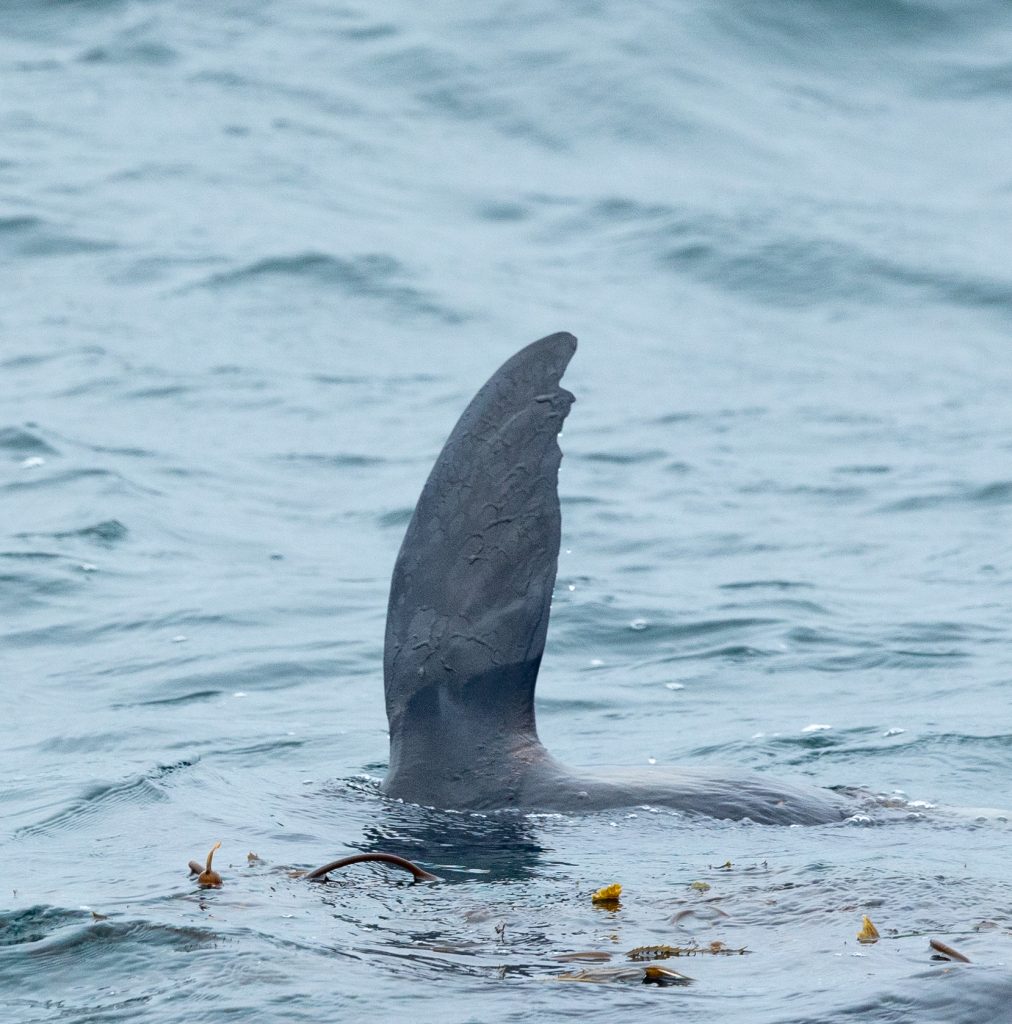
Spot the fur?
We continued on our way half an hour – and many photos later. I was still stressing about my pictures when we ran across other fur seals: alone, in pairs or groups of three. All up we saw about 10 animals scattered over a few miles of ocean. We didn’t stop to photograph most of them but I did get a few pictures of a group of three animals below. Their head shape looked more like the classic Guadalupe Fur Seal.
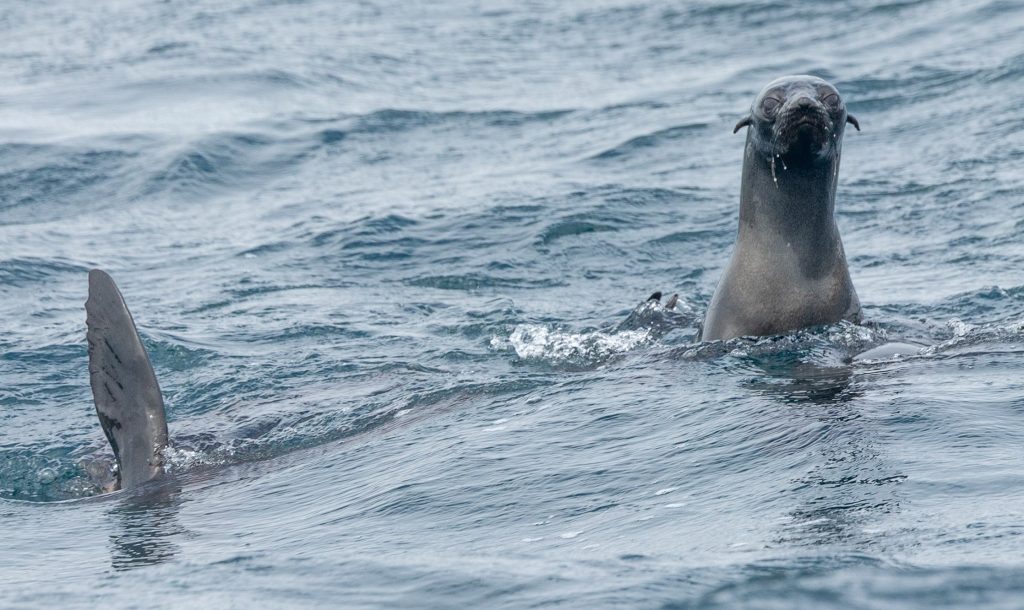
Guadalupe Fur Seal (Arctocephalus townsendi)
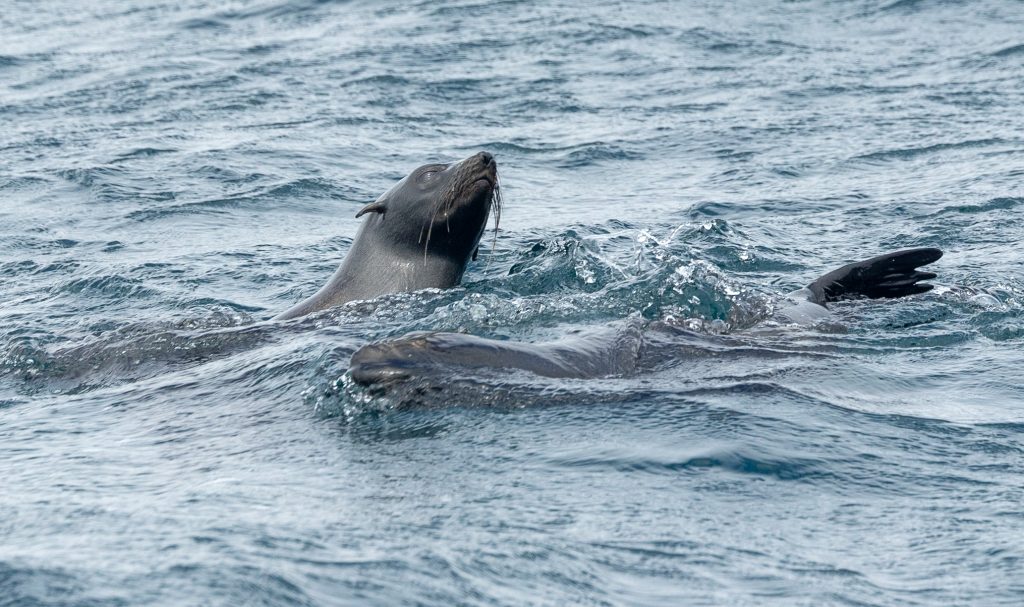
Guadalupe Fur Seal (Arctocephalus townsendi)
And I am very glad I did get some more pictures. Turns out the first animal was indeed a Northern Fur Seal, but the group of three animals were Guadalupe Fur Seals. Alvaro Jaramillo – who spends a lot of time out in the bay alerted me to my misidentification and gave some helpful advice on how to tell the two species apart, and how the colour of the whiskers might be a useful ID characteristic. He commented:
“The profile of the first animal has what I call a “rat face” pointed, and the angle of the forehead and the mandible both go towards a single point, making a profile that is more symmetrically triangular than a Guadalupe. The good news is that the bottom photos are 100% Guadalupes, with a more sea lion like face, where the forehead and top of head is more horizontal and level, and a less symetrically triangular face. More dog like, less rat like. The top animal also has very long hind flippers past the nails, this is typical Northern. The best feature is one I am getting much more confident on now, and it is whisker color. Northerns have very white and long whiskers. Typically Guadalupe has dark whiskers, and if they are paler it is at their tips, not bases. You can see the whisker color difference clearly in these photos, and this may in the end show up as one of the best features for separating them at sea in variable conditions. But we are still learning.”
We saw a pair of Fin Whales in the same area, and then headed for shore before the wind picked up any more, spotting a few Humpback Whales on the way in.
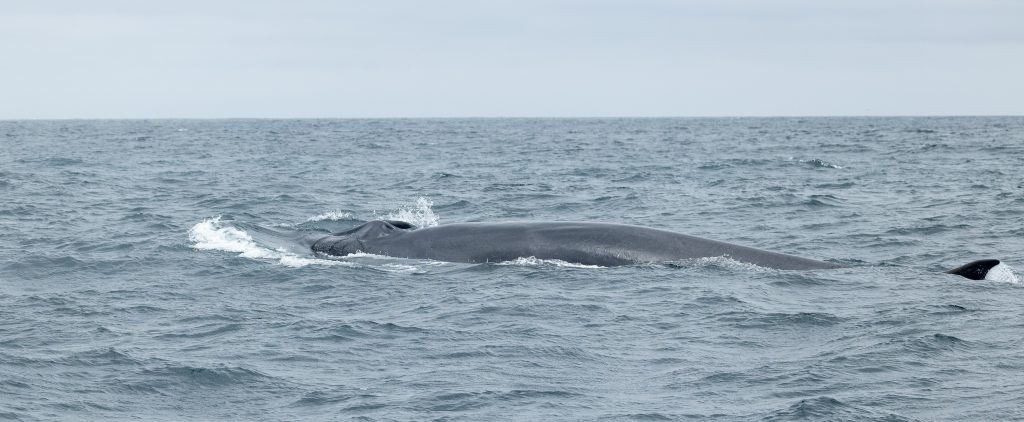
Fin Whale (Balaenoptera physalus)
After pledging my undying devotion to Nancy and the Monterey Bay Whale Watch team I drove back to San Francisco to catch a red-eye back to New York. Pretty tired but very happy.
Thank You
A massive thanks again to Nancy Black for all her help in getting me the fur seals, to Venkat Sankar for his help finding me a pocket mouse and to Charles Hood and others for keeping the mammalwatching world informed about the influx of fur seals into the bay.
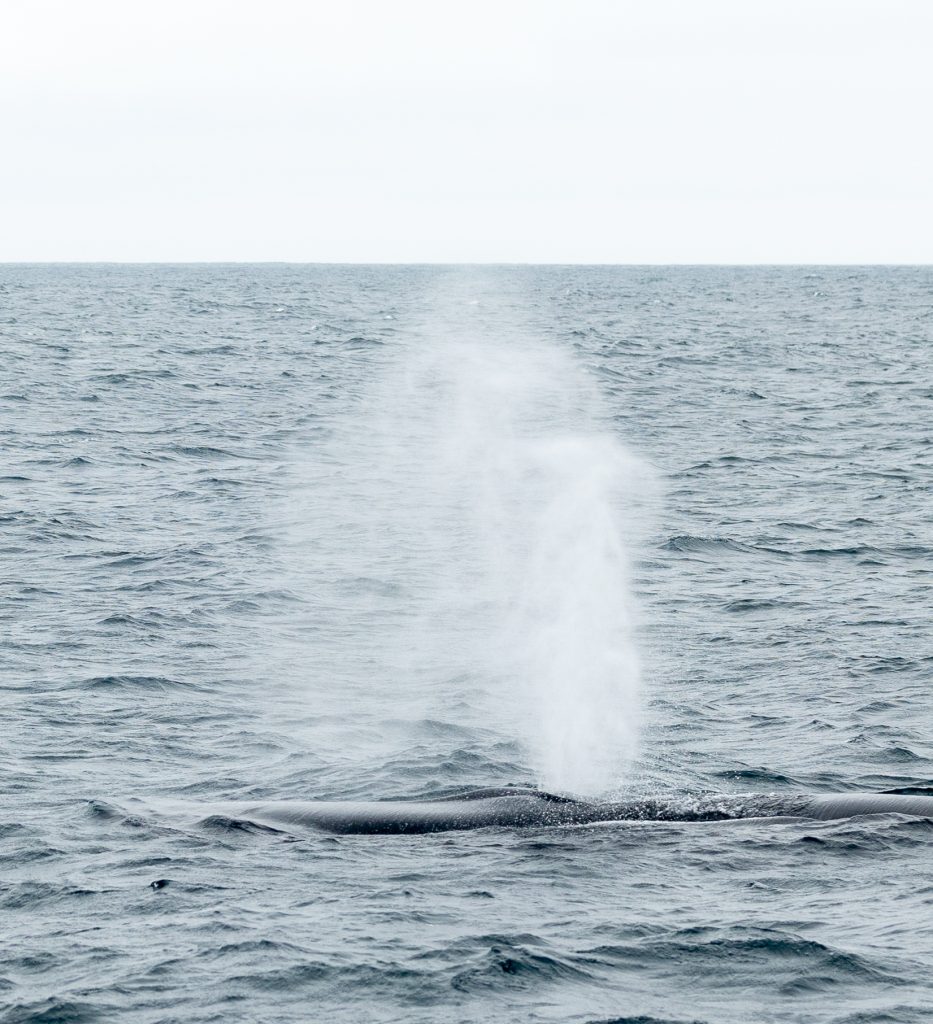
Fin Whale (Balaenoptera physalus)
Trip List
San Joaquin (Salinas) Pocket Mouse (Perognathus inornatus)
Giant Kangaroo Rat (Dipodomys ingens)
Gambel’s Deermouse (Peromyscus gambelii)
Northern Fur Seal (Callorhinus ursinus)
Guadalupe Fur Seal (Arctocephalus townsendi)
Californian Sea Lion (Zalophus californianus)
Northern Elephant Seal (Mirounga angustirostris)
Sea Otter (Enhydra lutris)
Fin Whale (Balaenoptera physalus)
Humpback Whale (Megaptera novaeangliae)
Pacific White-sided Dolphin (Sagmatias obliquidens)
Orca (Orcinus orca)
Short-beaked Common Dolphin (Delphinus delphis)
13 species and two lifers (bold)
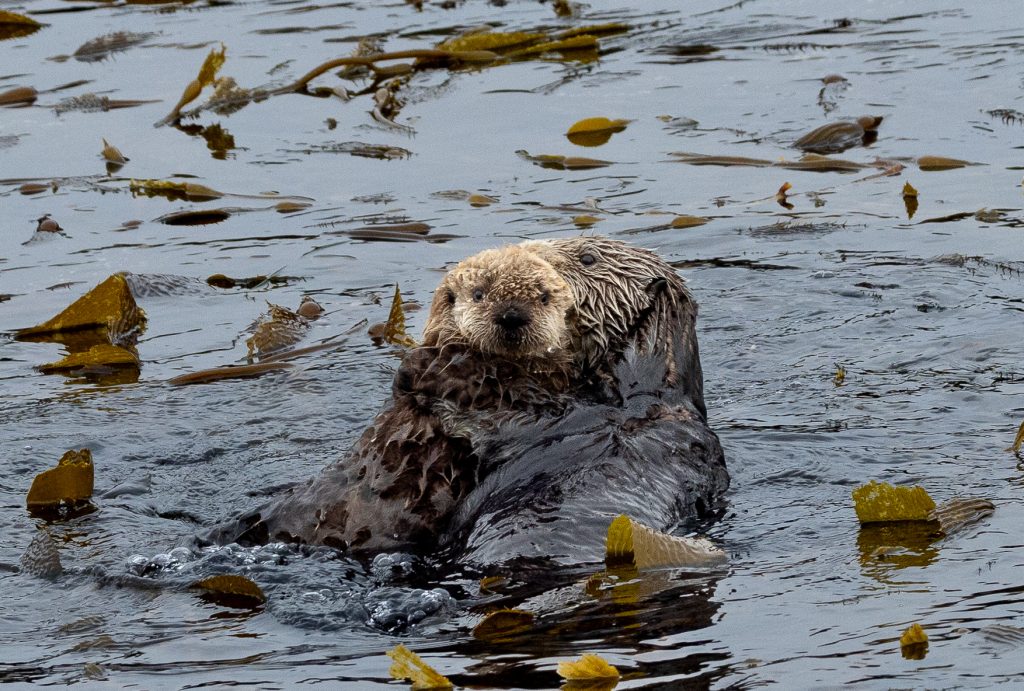
Sea Otter (Enhydra lutris)
Post author
5 Comments
-
charleswhood
So glad you were successful on both of those lifers, Jon. There have been scattered reports of Guad Fur Seals from recent San Diego pelagic trips as well. As a very unscientific impression, it seems to me that this year off all of the California ports taken in aggregate, there have been more Fin Whales than usual and fewer Blue Whales.
Leave a Reply
You must be logged in to post a comment.


AlvaroJaramillo
Jon. I am glad you posted the photos of the fur seals, and in particular for the second set of photos. The reason is that the first one, the one right up at the top of the page is a Northern Fur Seal. They are in the right conditions, if you can see the head in the right angles, not that difficult. But that is after years of taking photos of the things and sorting through them and understanding which views are not diagnostic, and which are. The profile of the first animal has what I call a “rat face” pointed, and the angle of the forehead and the mandible both go towards a single point, making a profile that is more symmetrically triangular than a Guadalupe. The good news is that the bottom photos are 100% Guadalupes, with a more sea lion like face, where the forehead and top of head is more horizontal and level, and a less symetrically triangular face. More dog like, less rat like. The top animal also has very long hind flippers past the nails, this is typical Northern. The best feature is one I am getting much more confident on now, and it is whisker color. Northerns have very white and long whiskers. Typically Guadalupe has dark whiskers, and if they are paler it is at their tips, not bases. You can see the whisker color difference clearly in these photos, and this may in the end show up as one of the best features for separating them at sea in variable conditions. But we are still learning.